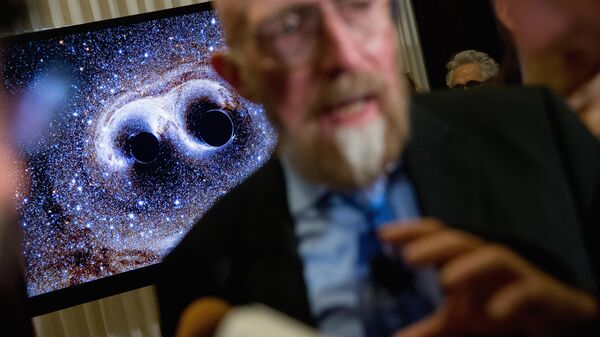MOSCOW (Sputnik) — The gravitational waves, or ripples in space-time, were detected from the collision of two black holes.
"During a press briefing held simultaneously at the Lomonosov Moscow State University and the American Astronomical Society in San Diego, scientists from the LIGO collaboration have presented another piece of evidence in support of Einstein's theory on gravitational waves, they were registered by both LIGO detectors located in Livingston, Louisiana and Hanford, Washington," the MSU said in a statement.
The first gravitational wave signals were detected in February. LIGO Executive Director David Reitze said that the signal of two colliding black holes producing gravitational waves was picked up on September 14, 2015, by two LIGO detectors in Louisiana and Washington states.
"The second detection of gravitational waves from merging black holes by LIGO detectors is very important. The foundation for gravitational-wave astronomy is becoming ever more solid and reliable," Valery Mitrofanov, who heads one of two Russian groups in the LIGO collaboration, said.
According to Einstein’s theory of general relativity, two black holes orbiting each other lose energy as they send out gravitational waves. As a result, the two bodies approach each other over a billions of years, ultimately speeding up and colliding into a single "black star" and emitting gravitational waves.
The LIGO Scientific Collaboration includes over 1,000 scientists from 15 countries, including Russia. Some 90 universities and scientific research centers are taking part in the project, with around 250 students also contributing to the work.


